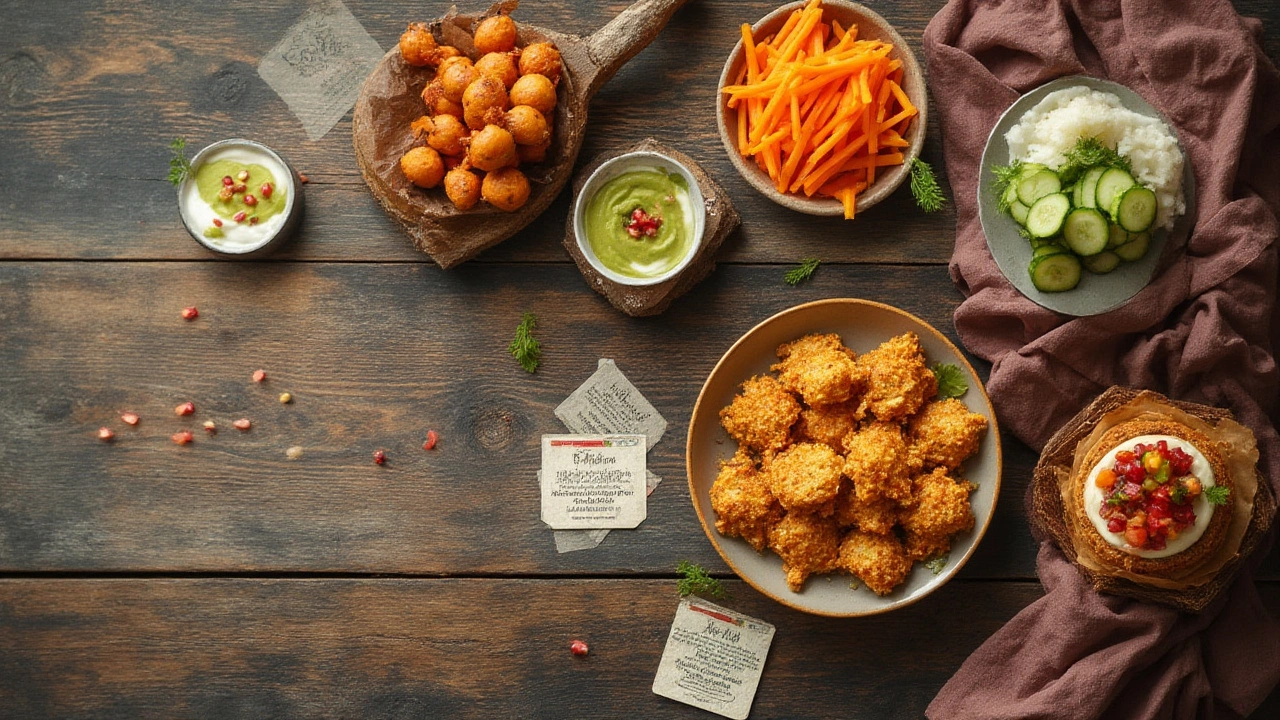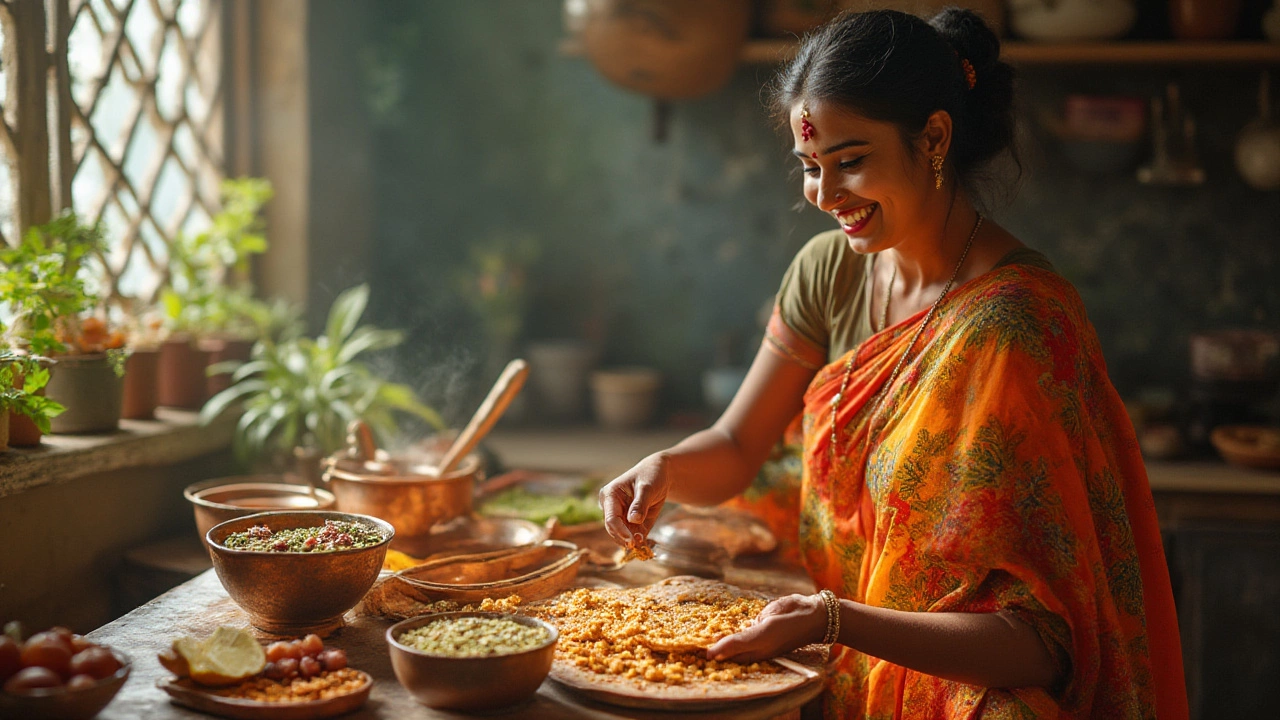Ever wondered why your energy plunges in the afternoon, right when you’re craving a crunchy, salty bite? But instead of grabbing a bag of chips, imagine picking a snack that keeps your taste buds happy and your body guilt-free. The surprising hero of Indian snacks isn’t packed with oil or sugar. It’s humble, familiar, and when made right, it even outshines dishes with big reputations. We’re talking about roasted chana—the underdog snack with a nutrition profile that turns heads. Let’s break down why this classic Indian munchy tops the charts as the most healthy Indian snack and how you can turn snack time into a health boost instead of a compromise.
Why Roasted Chana Stands Out Among Indian Snacks
From North India’s spicy snacks to South India’s savory munchies, the Indian food scene is loaded with options. But when nutritionists put these snacks head-to-head, roasted chana (also called roasted Bengal gram or bhuna chana) beats most contenders squarely. Here’s why: A 30g serving of roasted chana packs nearly 6g of protein, about 120 kcal, high fiber, and almost no sugar or unhealthy fats. That’s more protein than a boiled egg, but with less cholesterol and zero animal fat.
The protein and fiber combo keeps you full far longer than samosas or pakoras. The fiber—3g per small serving—does wonders for your digestive health and helps control blood sugar spikes. Even better? Chana is naturally low on the glycemic index, making it suitable for people with diabetes. There’s no deep-frying here; just dry roasting. That means no “hidden” oils sneaking extra calories into your day.
Let’s get specific: According to India’s National Institute of Nutrition, roasted chana is nutrient-dense, with essential minerals like magnesium, potassium, and iron. Magnesium supports heart health, potassium balances blood pressure, and iron keeps your energy up. Compare chana to popular snacks like kachori, aloo bhujia, or processed cheese cubes—all loaded with sodium, saturated fats, or, in the case of sweets, sugar. Roasted chana comes out with flying colors every time.
Don’t just take my word for it. There’s a reason top Indian dietitians recommend it as a pre- or post-workout snack, a work-from-home desk sidekick, or a kids’ tiffin staple. It’s easy to toss into your bag for a busy day or to spice up with a pinch of chat masala if you’re bored. Simple, affordable, no rocket science.
| Snack | Calories (per 30g) | Protein (g) | Fiber (g) | Sugar (g) | Fat (g) |
|---|---|---|---|---|---|
| Roasted chana | 120 | 6 | 3 | 0 | 2 |
| Samosa | 130 | 2 | 1 | 0 | 6 |
| Aloo bhujia | 158 | 2 | 1 | 1 | 11 |
| Puffed rice (murmura) | 110 | 2 | 0.5 | 0 | 0.2 |
| Boiled eggs | 78 | 6 | 0 | 0.6 | 5 |
Beyond the Basics: Variations and Upgrades for Roasted Chana
Let’s be honest—eating the same snack day after day can get old. But roasted chana is surprisingly versatile. You can play around with flavors and combos to keep things exciting. Try tossing warm roasted chana with a spritz of lime and a dusting of chili powder, or mix it with chopped onions, tomatoes, fresh coriander, and a sprinkle of chaat masala for instant chana chaat. For something sweet, some people roast chana with a whisper of jaggery and fennel. That tiny dose of sweetness satisfies cravings without undoing the health benefits.
If you like crunchy salads, throw a handful of roasted chana into your kachumber salad with cucumbers and tomatoes. The result? An upgrade in the fiber and protein department that makes your salad way more filling. Don’t skip sprouted chana, either: Soak your chana overnight, drain, and let it sprout for 24 hours. Sprouted chana is even higher in digestible protein, easier on the stomach, and gets a mild, nutty flavor pop.
Kids can join the fun, too—make colorful chana trail mix with puffed rice, peanuts, bits of dried fruit, and chopped dates. Want it spicy? A toss with curry leaves, roasted cumin, and garlic powder instantly changes the whole vibe. Got five minutes to spare? Blend roasted chana into a spicy powder (chutney podi) to sprinkle on curd, khakra, or even your morning oats for an energy kick.
Roasted chana also works in low-calorie Indian chaats (skip the sev and excess oil). Mix with boiled sweet potato, pomegranate seeds, and a dash of lemon for a refreshing, fiber-rich snack that’s easy to prep ahead. If you struggle to stay away from fried snack packets, keep roasted chana jars handy at home and office—sometimes keeping good choices in sight is half the battle.

Alternative Healthy Indian Snacks if You Need Variety
While roasted chana is the pinnacle of healthy snacking, maybe you’re looking for a change of pace now and then. Here are other Indian snacks that pack nutrition with flavor—each one shining for different reasons. First, dhokla! Steamed and made from fermented besan (chickpea flour), dhokla punches above its weight when it comes to gut health, thanks to probiotics. It’s low on oil and has a modest glycemic load.
Then there’s moong dal chilla—a savory pancake made with moong dal batter (whole or split mung beans). High in protein, low in fat, and customizable with fresh veggies or greens, these are ideal breakfasts or light snacks. The trick is to avoid drowning them in oil while frying—use a good nonstick pan and a brush of oil. Add a spicy mint-coriander chutney for extra zing.
Need something portable and munchy? Try makhana (fox nuts), roasted with turmeric or black pepper. Makhana is gluten-free and full of magnesium and plant-based protein. A cupful provides a light, low-calorie crunch—good for those who binge mindlessly. If you crave something sweet, opt for fruit chaat—a mix of seasonal fruits with a squeeze of lemon, a pinch of roasted cumin, and maybe some black salt. Natural sugars, check! Vitamins, check!
Give sprouts a chance, too. Moong sprouts salad with shredded carrots, diced tomatoes, chopped onions, and a dash of lemon is both filling and bursting with freshness. It keeps for hours in the fridge so you can meal-prep like a pro. And if you’ve got time, home-roasted peanuts or mixed seeds (pumpkin, sunflower, sesame) give you healthy fats and crunch minus the empty calories.
If you’re old-school, don’t forget about handvo (Gujrati savory cake with vegetables and lentils), idli (steamed rice cakes, especially if made with added millet for extra fiber), or plain steamed corn with chaat masala. Keep in mind—packaged snacks with “multigrain” or “diet” labeling often sneak in refined flour and palm oil. Read your labels if you go store-bought—fresh is usually best.
Tips to Make Your Indian Snacks Even Healthier
Let’s make snacking your superpower, not your guilty pleasure. Start with portion size—just because a snack is healthy doesn’t mean it’s a free pass to eat the whole jar. About ¼ cup (a big handful) of roasted chana per snack session is perfect. Pair it with fresh fruit or a glass of buttermilk for a balanced mini-meal, especially if you tend to snack mid-morning or late afternoon.
For the super-busy, batch-roast your chana on Sunday. Store it in airtight jars, and keep one at work, one at home. If you have kids, involve them: let them invent their own chana mixes using spices, chopped veggies, or dried fruits. Teach them the value of wholesome snacking early.
Craving crunch but bored of chana? Rotate among your snack options: roasted makhana one day, steamed dhokla the next, sprouted chana salad after that. Making a routine out of variety helps you get a broader range of nutrients and keeps food fatigue away.
Spice selection is your secret weapon. Exploring flavors—amchur, peri peri, black pepper, roasted sesame—keeps healthy snacks from tasting plain. Just avoid packet masalas loaded with extra salt, MSG, or sugar. Go for homemade spice blends that you can tweak to your mood.
Stay hydrated! Many of us mistake thirst for hunger and end up munching unnecessarily. Keep a bottle of water or a glass of lime water beside your snack stash. If you work at a desk, stand up and stretch while snacking to stave off cramps and improve digestion.
Finally, remember this: making the healthy indian snack your go-to doesn’t mean cutting out fun. Experiment, share your favorite combos, and turn each snack into a small act of joy—your body and mind will thank you for it, snack after snack.
